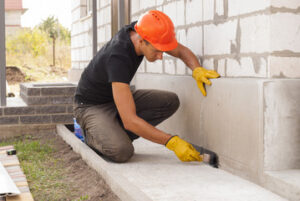Choosing a moving company is an important decision. You need to consider factors like distance, size, budget, time, and additional services. Connect with Moving Companies Idaho Falls for reliable help.

Running a moving business requires physical stamina and a good understanding of logistics. It is also essential to obtain liability, cargo, and workers’ compensation insurance.
A move is a big financial commitment. Moving companies offer a range of services to make the process less stressful and more efficient. These services include packing, loading, transportation, and unpacking. They also provide specialized equipment to handle heavy and bulky items. In addition, they can provide storage solutions for temporary needs. It is important to understand the cost of these services before hiring a company.
A full-service moving company can save you time and money by handling all aspects of your move. They can even provide packing materials such as bubble wrap and sturdy boxes. This is a valuable service for busy people who do not have the time to shop for these supplies.
When selecting a moving company, you should always ask about their years in business and check online reviews. A good company will be willing to explain their pricing structure and answer any questions you may have. You should also seek out referrals from friends and family who have used movers in the past.
The cost of a move can vary greatly depending on the size of your home and the number of items to be moved. A large move will require a larger truck, which will increase the price. Additional services such as assembling and disassembling furniture will also add to the cost. A reputable moving company will provide a written estimate of the total cost of your move.
It is customary to tip movers who provide packing services. However, the amount you should tip will depend on the quality of service and the level of expertise provided by the movers. On average, you should tip 5% to 20% of the cost of your move.
It is important to read your moving contract carefully. Many moving companies have hidden fees and charges that are not always included in the quote. These extra charges can add up and significantly increase the cost of your move. Some of these charges include charges for staircases, elevators, and truck access issues. To avoid these charges, you should try to move during off-peak times.
Service
Moving companies provide a wide range of services during the relocation process. They help individuals and businesses move their belongings to new locations, providing services such as packing and unpacking, transportation, assembly or disassembly of furniture, and storage solutions. They also offer guidance and support throughout the relocation process. They are experienced in handling fragile and valuable items, and can assist with the assembly or disassembly of appliances and home entertainment systems.
Moving is a labor-intensive business that requires physical stamina, organizational skills, and the ability to handle logistics effectively. This type of business is an excellent option for people who enjoy working with their hands, are good at problem-solving, and have a strong desire to provide exceptional service. Additionally, it is important to research the industry and local market demand before starting a moving company. You should also determine if you have the necessary resources to run your business successfully, including a vehicle for transporting goods, insurance coverage, and supplies for packaging and protecting items.
When choosing a moving company, make sure they have experience in the industry and provide a competitive rate for their services. Look at customer feedback and reviews to find out how satisfied customers are with the company’s service. Additionally, ask the company if they offer a guaranteed written estimate. This will help you avoid hidden charges and unexpected costs.
Reputable movers will have several service options to suit your needs and budget. A full-service move is typically the most expensive, but it will save you time and effort by taking care of all aspects of your relocation. They will also have specialized equipment for transporting heavy or large items, and can help you plan your move and pack your possessions.
Other types of moving services include self-service moves, which involve loading your belongings into a container and transporting it to your new location. This is a more cost-effective option than hiring movers to pack and load your belongings for you, but you will need to arrange transportation and handle the unloading yourself. If you’re relocating to a different state or country, a long-distance moving company can provide the necessary services to transport your belongings safely and securely.
Reputation
Choosing the right moving company for your move is an important decision. Not only will you want to hire a trustworthy, professional company, but you will also want to ensure that they are licensed and insured to protect your belongings. You can do this by checking online reviews, comparing prices, and asking about insurance coverage. You can also ask friends and neighbors for recommendations. The more positive reviews a company has, the more likely you are to choose them for your move.
The best movers have an excellent reputation and can deliver on their promises of quality service and fair pricing. They will also be able to provide a wide range of services, from packing to disassembling furniture. They will also offer storage and specialized transport services for high-value items and fragile goods. The most reputable companies have been in business for years and will be able to provide references from previous customers. In addition, they will be able to handle a wide variety of moves, both local and long distance.
While you’re researching potential movers, keep in mind that some online reviews are subjective and reflect only the experience of one consumer. You should also look at the overall ratings a company has received, as well as the number of complaints submitted to the Better Business Bureau. A low score may be a red flag, but it’s important to understand that even reputable movers can have a bad day.
A good moving company should have a physical address, a website, and verifiable credentials. You should also check the Federal Motor Carrier Safety Administration’s complaint database and make sure the company has a valid DOT or MC number and is registered as either a carrier or broker. Additionally, it should have a legitimate physical address and not frequently change its name.
Lastly, a good moving company will have a strong web presence and be active on social media. They will also be a member of a reputable industry association, such as the American Moving and Storage Association. This is an indication of their commitment to upholding ethical standards in the industry.
Insurance
When you hire a moving company, you want to ensure that your belongings are protected. If something happens to your possessions during the move, you should make sure that the moving company has insurance coverage to pay for damages. A certificate of insurance is an important document that shows that a moving company has insurance coverage to protect its customers. It also outlines the terms and conditions of the coverage.
A moving company must have a certificate of insurance to operate legally in most states. It should have general liability, commercial auto, workers’ compensation and professional liability insurance. These policies protect movers from third-party claims that could lead to expensive lawsuits. They also cover legal fees for defending against these claims. If a moving company does not have these insurance policies, it is likely that you should look for another one.
Some moving companies offer full-value protection, which covers the replacement value of your items if they are lost or damaged during the move. This option is more expensive than a released rate, which limits the moving company’s liability to $0.60 per pound per article. Choosing the right moving company insurance is crucial to avoid costly mistakes and to reduce your stress.
Many people do not realize that a moving company must have liability insurance to transport a customer’s personal property. In fact, federal law requires movers to carry liability insurance for the transportation of household goods. The insurance covers the cost of repair or replacement for the items in case they are lost, stolen or destroyed. It does not cover the cost of packing materials or labor.
In addition to having liability insurance, a good moving company should have commercial umbrella insurance. This coverage boosts the limit of a moving company’s commercial auto, general liability and workers’ compensation insurance. It can be helpful if a lawsuit is filed against the company.

